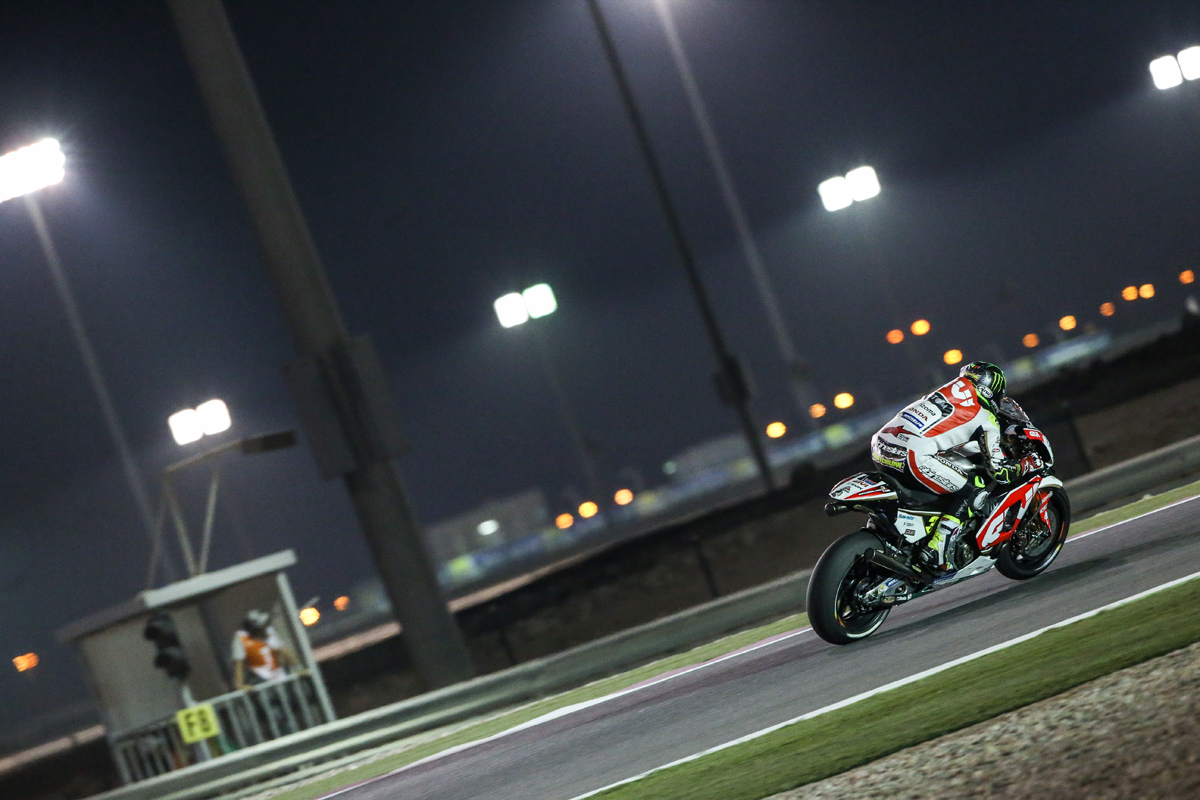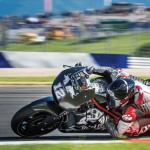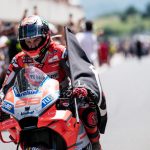Is fourth a bad result? Or to put it another way, is fourth such a bad result at the first race that Marc Márquez has already given himself a huge mountain to climb? With the factory Repsol Hondas of Márquez and Dani Pedrosa finishing in fourth and fifth, seven seconds behind the winner, is the RC213V in trouble?
It would be an easy conclusion to draw. After all, last year, Márquez finished on the podium in Qatar, just a couple of seconds off the winner, and right behind Andrea Dovizioso on the Ducati. The last time he finished off the podium was 2015, and we know what happened then. Márquez struggled with the bike in the first half of the year, and crashed trying to keep himself in the championship fight. He fell off in three of the first seven races, and entered the second half of the season already 74 points adrift of then leader Valentino Rossi. It was a deficit he would not make up again.
There are worrying signs for the Hondas this year as well. Acceleration remains the RC213V’s Achilles heel, as was obvious from the helicopter footage of Márquez coming onto the straight alongside the factory Yamahas and Ducati of Andrea Dovizioso. More painfully still, when the cameras showed Dani Pedrosa battling with Aleix Espargaro on the Aprilia RS-GP, it was the much taller, much heavier rider on the bike (who finished no higher than seventh last year) which was leaving the lightweight rider on the championship-winning bike for dead. In terms of top speed, Márquez was 6 km/h down on Dovizioso, and 1.5 km/h down on Valentino Rossi. He was even slower than Aleix Espargaro, though there was very little in it.
There are a lot of reasons why Márquez had a tough night on Sunday. Some of those are unique to this race at Qatar, others are more to do with the development of the RC213V. Márquez’ result on Sunday was not a real reflection of his potential there. Nor should it be extrapolated too far into the rest of the season. The biggest problem was one not of his own making. The weather had one last, cruel joke to play on Sunday evening.
The medium front was the wrong tyre for the Hondas. Márquez and Crutchlow both overheated the front pushing on the brakes to try to stick with it. Crutchlow got a fraction off line and crashed. Márquez, perhaps more conscious of his long term objectives, stuck with the group at the front for the first half of the race, but had to let them go. He lost nearly six seconds in the last ten laps.
Would Márquez have finished higher if he had stuck to his guns over the hard front tyre? “After the race, I thought with a hard I was able to fight for the victory until the end. But maybe I was also able to crash!” was his diplomatic response. The real issue, he underscored once again, was the lack of acceleration, which made the bike so hard to ride. “If you have an easy bike, then it’s easier to make the correct decision. If you have a bike where you are on the limit, if you don’t make the perfect decision, you already lose too much time.”

This is the Honda’s biggest problem: the bike is aggressive in acceleration, wheelying and spinning the rear coming out of corners. The riders have to fight the bike to get it under control on corner exit, and that is losing them time. The Yamahas and Ducatis are better at creating mechanical grip, and are just driving out of the corner. Much of their top speed advantage comes from there, from drive onto the straight, rather than outright horsepower.
Honda’s switch to a big-bang firing interval is meant to address this. By changing the crankshaft to group the point at which each cylinder is fired so that it is closer together, Honda have attempted to make an engine which is more docile and user-friendly. That, at least, is the theory. With spec electronics, it is a little more difficult. Changing the engine character also means creating a whole new set of engine maps to optimise the new engine’s behaviour. It’s not quite starting from scratch, but it’s not far off. There is still a lot of work to be done before they get it just right.
The good news for Márquez is that the process will be much quicker this year than it was in 2016. Honda learned a lot about the Magneti Marelli system in 2016, but it took them until the summer break, between the Sachsenring and Austria, to bring a software update which got the best out of the existing engine. With a better understanding of the idiosyncrasies of the system, they should have a much better electronics model some time around Jerez or Le Mans. With better torque maps and traction control settings, Márquez should be able to take advantage of the benefits the big-bang engine offers. If history is any guide, at that point he becomes a very hard man to beat.
Of course, the big difference with 2016 is that Marc Márquez was leading the championship early, and even when he lost the lead, he never trailed Jorge Lorenzo by more than 10 points. Leaving Qatar, Márquez trails Maverick Viñales by 12 points. Making things worse, we head to Argentina, which looks pretty much tailor-made for Viñales on the Yamaha. The Termas de Rio Hondo circuit is fast and flowing, like Phillip Island, where Viñales was three tenths of a second quicker than the reigning world champion. If Viñales wins there, Márquez could find himself 20 points or more behind after just two rounds. Dealing with that kind of pressure will be the true test of Márquez’ character. He will need HRC to fix the RC213V’s acceleration problems sooner, rather than later.
Photos by CormacGP








